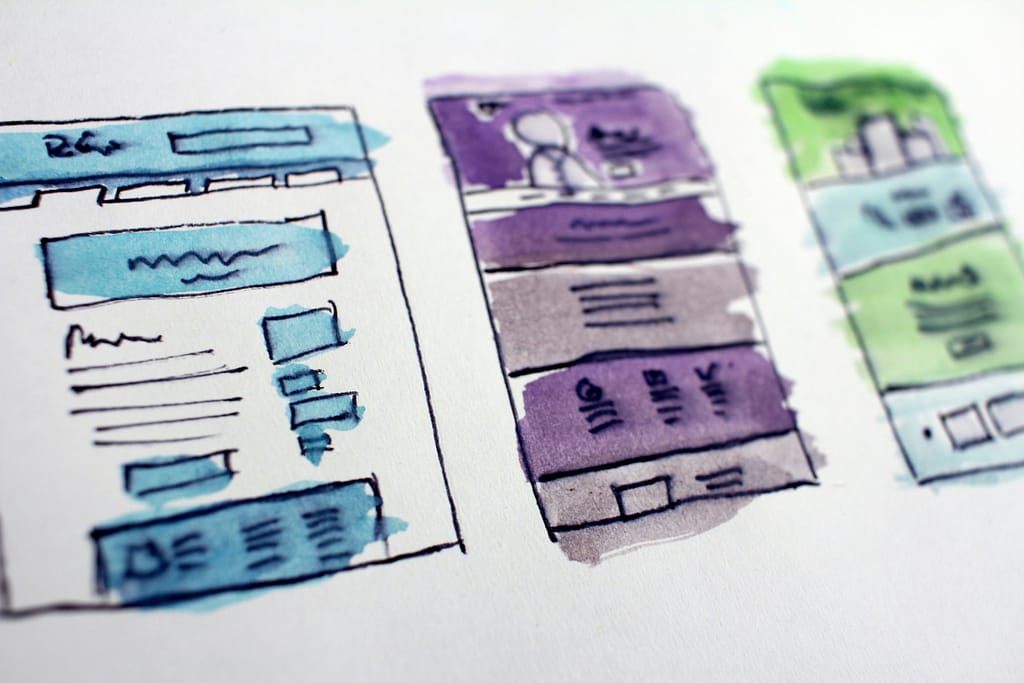Creating a website that converts visitors into customers is crucial for the success of any online business. Whether you’re launching a new site or looking to improve an existing one, understanding website design best practices can make a significant difference.
Website Design Best Practices for Higher Conversions
1. Understanding User Experience (UX) Design
User Experience (UX) design is the foundation of any successful website. It’s not just about how a site looks, but how it works for the people who use it. A well-designed UX ensures that visitors find the site easy to navigate, the information they seek is easily accessible, and their overall interaction with the site is enjoyable.
When focusing on UX design, consider the following:
- Intuitive Navigation: Ensure that users can find what they’re looking for with minimal effort. Use clear, descriptive labels for navigation links, and keep the menu structure simple.
- Mobile Responsiveness: With more users accessing websites via mobile devices, ensuring your site is mobile-friendly is non-negotiable. Responsive design automatically adjusts your site’s layout based on the device’s screen size, enhancing the user experience.
- Fast Load Times: Speed is critical. A delay of even a second can lead to a higher bounce rate. Optimize images, use efficient coding practices, and leverage browser caching to improve load times.
A well-executed UX design doesn’t just keep visitors on your site—it encourages them to take action, whether that’s filling out a form, making a purchase, or signing up for a newsletter.
2. Implementing Clear and Compelling Calls to Action (CTAs)
The call to action (CTA) is arguably the most critical element on your website. It’s the bridge between a visitor and a conversion. Without a compelling CTA, users may navigate away without taking the desired action.
Here’s how to optimize your CTAs:
- Placement: Position CTAs in prominent locations, such as the top of the page, at the end of content, or within the main body of a landing page. Use eye-catching buttons that stand out but also align with your overall design.
- Language: Use action-oriented language that speaks directly to the visitor. Phrases like “Get Started,” “Sign Up Now,” or “Download Free Guide” are effective because they tell the user exactly what to do.
- Design: Ensure your CTA buttons are visually distinct but cohesive with the site’s design. Use contrasting colors, sufficient whitespace, and avoid clutter around the button.
- Testing: Regularly A/B test different versions of your CTAs to see which ones convert better. Small changes in wording, color, or placement can significantly impact performance.
An effective CTA guides the user through your conversion funnel, making it as easy as possible for them to complete the desired action.

3. Content Optimization for Engagement and SEO
One website design best practices that needs to be incorporated is content. Content is at the heart of your website. It’s what informs, persuades, and ultimately converts visitors. However, content must be both engaging to the reader and optimized for search engines (SEO) to drive traffic and conversions.
Key strategies for content optimization include:
- Quality Content: High-quality, relevant content that addresses your audience’s needs and questions is critical. This not only keeps visitors engaged but also helps establish your authority in your niche.
- SEO Best Practices: Incorporate target keywords naturally throughout your content, including in headings, meta descriptions, and image alt texts. Use internal linking to guide users to related content and improve your site’s SEO.
- Readability: Break up long paragraphs into shorter, more digestible chunks. Use bullet points, numbered lists, and headings to make the content easier to scan. Additionally, use a conversational tone that resonates with your audience.
- Visual Content: Enhance your written content with visuals such as images, infographics, and videos. Visual content is more engaging and can help explain complex concepts more effectively.
Well-optimized content not only improves your site’s search engine rankings but also increases user engagement, leading to higher conversion rates.
4. Building Trust with Your Audience
Trust is a crucial factor in conversion. If visitors don’t trust your website or your brand, they’re unlikely to convert, no matter how good your design is. There are several ways to build and maintain trust on your website:
- Professional Design: A professional-looking website instills confidence. Avoid outdated designs, broken links, or inconsistent branding. Ensure that every aspect of your site reflects the quality of your products or services.
- Testimonials and Reviews: Showcase customer testimonials and product reviews prominently on your site. Social proof is a powerful tool that can persuade potential customers to trust your brand.
- Security Features: Display trust badges, such as SSL certificates and secure payment icons, to reassure visitors that their information is safe. Also, include a clear privacy policy and terms of service.
- Transparency: Be transparent about your business practices. Provide detailed information about your products, services, pricing, and return policies. Make it easy for visitors to contact you with any questions or concerns.
By building trust, you reduce the perceived risk of converting, making visitors more likely to take action.
5. Analyzing and Improving Conversion Rates
Finally, to achieve higher conversions, you need to continuously analyse your website’s performance and make data-driven improvements. Conversion Rate Optimization (CRO) is one of the strongest website design best practices right now. It is the process of increasing the percentage of visitors who take the desired action on your website.
Steps to optimize conversion rates include:
- Use Analytics Tools: Implement tools like Google Analytics, Hotjar, or Crazy Egg to track user behaviour on your site. These tools can help you identify where users drop off, which pages have high bounce rates, and what elements are most engaging.
- A/B Testing: Conduct A/B tests on different elements of your site, such as headlines, images, CTAs, and layout. A/B testing allows you to determine which variations perform better in terms of conversions.
- Optimize Landing Pages: Your landing pages are often the first point of contact for new visitors. Ensure they are optimized for both SEO and conversions. Keep them focused, with a clear value proposition and a strong CTA.
- Regular Updates: The digital landscape is constantly evolving, and so should your website. Regularly update your content, design, and functionality to keep up with current trends and user expectations.
By analysing your website’s performance and making ongoing improvements, you can steadily increase your conversion rates and maximize your return on investment.
A well-designed website that follows these best practices is more than just a digital brochure—it’s a powerful tool for driving conversions. By focusing on user experience, crafting compelling CTAs, optimizing content, building trust, and continuously analyzing performance, you can create a site that not only attracts visitors but converts them into loyal customers.
At TechUpgrade, we specialize in creating high-converting websites that align with your business goals. Whether you’re starting from scratch or looking to revamp your existing site, our team of experts can help you achieve higher conversions and grow your online presence.
Contact us today to learn more about our services and start your journey towards a more successful website.



